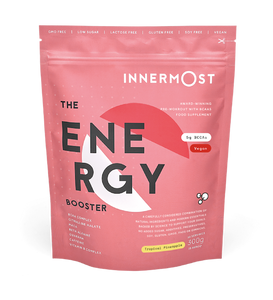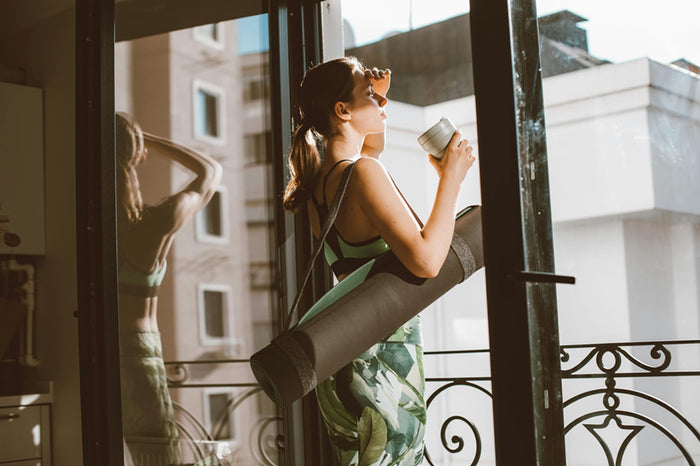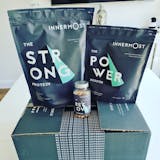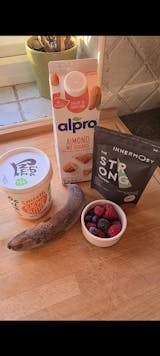Nobody’s favourite part of a run is the warm up. No matter how good you know stretching is for your body, we know that you’re raring to go and often find stretching before running a chore.
Running or working out with muscles that aren’t properly prepared, however, can lead to strains and injuries with the potential to keep you stuck on the sofa for weeks or even months at a time.
Warming up is incredibly important for your body. Dynamic stretches, meaning stretches that use movement and guide joints through their full range of motion, are better for warming up than static stretches, where you hold the stretch position for extended periods of time.
Studies have shown that dynamic stretching not only prepares you better for your workout, but it may give you a performance advantage over static stretching - all the more reason to follow our plan below to perfectly prep your body for a run.
You should spend around ten minutes warming up, focusing on the major muscle groups you’ll be using in your workout. Your flexors, glutes, quads, hamstrings, calves, abs and back are good places to start. It’s also important not to overstretch to the point of pain. Work your muscles to the point where you feel resistance, rather than severe discomfort.
Calf raise
The calves are one of the muscles that work the most during running - every time your foot leaves the ground, your calf contracts to raise and lower it. This makes this pre-run stretch especially important.
- Stand on the edge of a stair, with the balls of your feet as the only part of your foot touching the stair’s surface. Hold a stair rail for balance
- Rise up on your toes, then slowly lower your heels until they’re below the level of the stair and you can feel a stretch in your calf
- Repeat several times
Standing quad stretch
This pre-run stretch warms your quads and hip flexors, and if performed without holding anything to stabilise yourself, it’s also a great balance exercise.
- Bend your left knee and holding your left ankle, pull your foot behind you until it rests on your left glute
- Keeping your hips and shoulders aligned forwards, hold your foot there for a count of 10. You should feel the stretch through your left thigh
- Repeat on the other side
Hip flexor stretch
Anyone who works at a desk almost certainly has tight hip flexors. This makes stretching them out before you exercise extra important.
- Start in a lunge position, with your right knee at the front bent at a right angle
- Slowly straighten your left leg. You should feel a stretch on the front of your back thigh. Hold for 10 seconds, then release
- Repeat on the opposite side
Hip circle
As your hips support your whole body weight while you’re exercising, it’s important to ensure that they’re warm and supple before you start pounding the pavements.
- Stand with your hands on your hips and your feet hip width apart, with your feet facing forwards
- Begin to slowly circle your hips to the right, as if you’re moving an imaginary hula hoop, making the circles wider the longer you circle for
- Repeat for five to 10 times to the right before switching to the other direction
Side stretch
If you’ve ever suffered from a stitch while you run, you know how strikingly painful they can be. Stretching your torso before you set off can help prevent them.
- Hold your arms straight above your head and slowly lean to the right, bending gradually at the waist
- Hold for 10 seconds before switching to the other side
- Repeat five to 10 times, leaning further into the stretch each time
Walking lunge
Lunging while walking is a great way to gently warm your body into the forward motion of running.
- Start with your feet together. With your right foot, take a large step forwards
- Bend the front knee so it's 90 degrees and the back knee until it almost touches the ground. Hold for a few seconds
- Take another large step forwards with your left foot and repeat the process
- Continue until you’ve lunged five times on each leg
Dynamic pigeon pose
You may be familiar with pigeon pose from yoga. It stretches the glutes, hip flexors and the band of muscle which runs along your outer thigh, all of which can become tight and painful.
- Begin in a seated position. Bend your right knee in front of you so your thigh and shin are flat on the floor and your knee is pointed outwards
- Slowly extend your left leg behind you until it’s straight, with the top of your thigh and foot on the ground
- Add a torso twist by bringing your right hand up just behind your right ear, and twisting your body to the left as you bend forwards so your elbow comes across your body
- Repeat five to 10 times, then switch to the opposite side
For maximum energy while you’re working out, Innermost’s The Power Booster and The Energy Booster both contain ingredients proven to support your workout.























